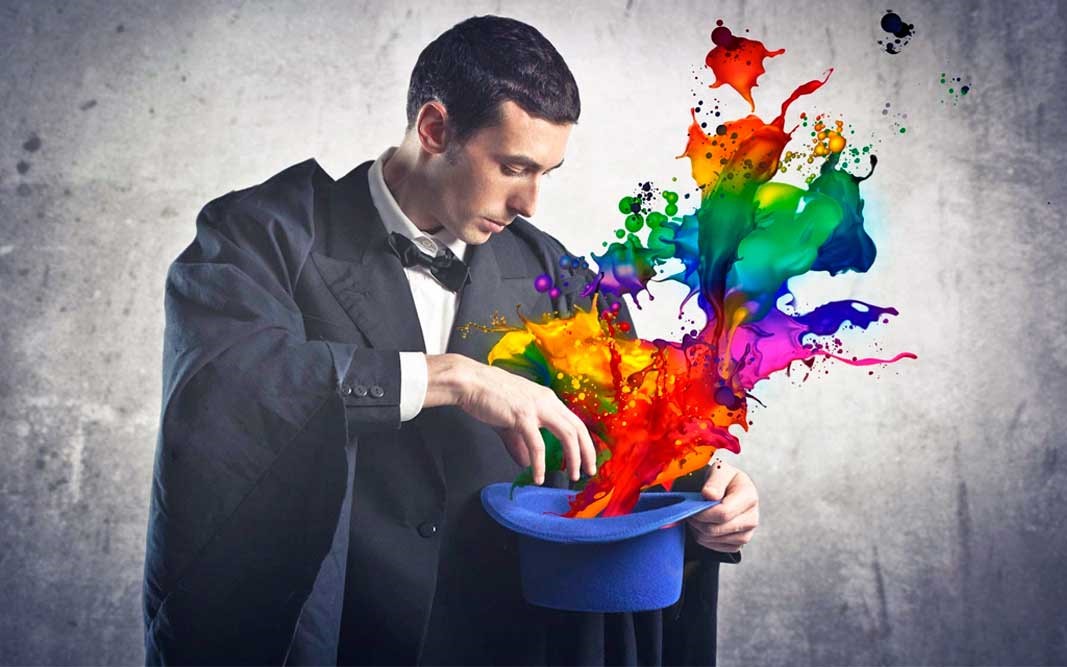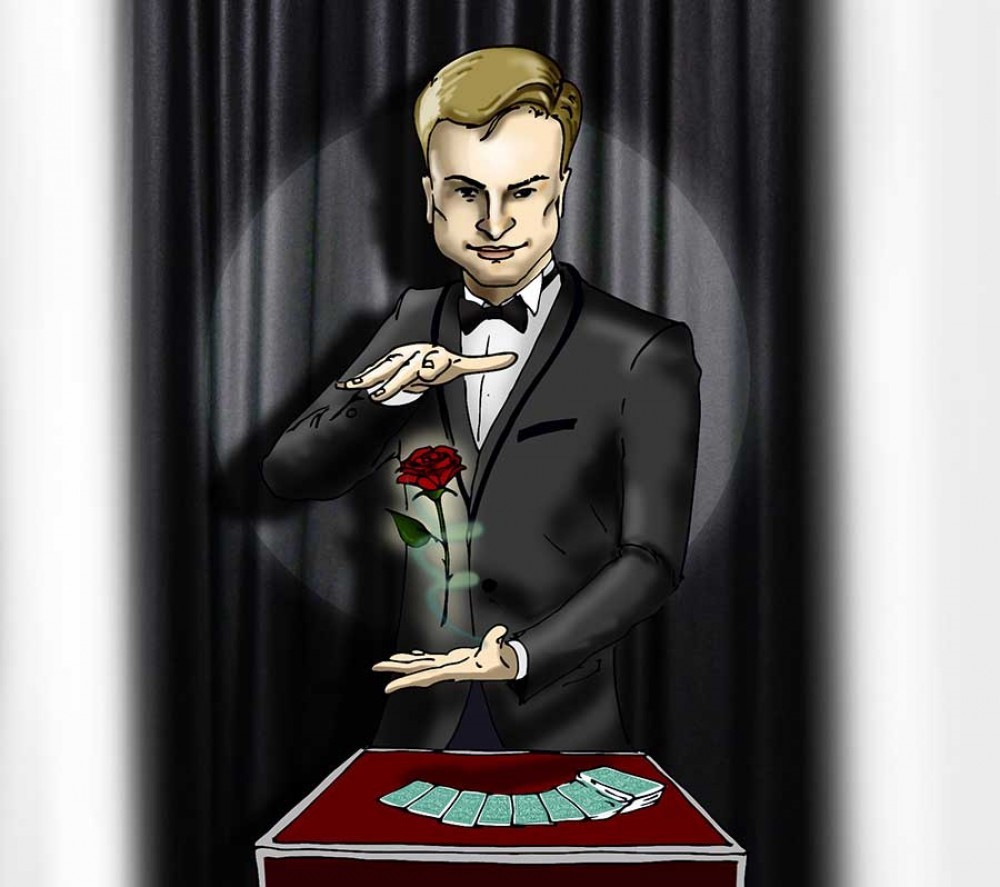An illusion is a false perception or interpretation of reality. Illusions can involve the senses of sight, hearing, touch, taste, or smell. They can be caused by various factors, such as physical objects or events, psychological factors, or physiological conditions.
Illusions can be used to deceive or mislead people, creating a false sense of reality. This can be done intentionally, as in the case of a magician using tricks to create illusions, or it can be unintentional, such as when someone perceives something differently from how it actually is due to their own biases or expectations.
There are many different types of illusions, including optical illusions, auditory illusions, and sensory illusions. Optical illusions are visual illusions that play tricks on the eye, such as when straight lines appear to be bent or when an image appears to be moving when it is actually still. Auditory illusions are illusions of sound, such as when a sound appears to be coming from a different direction than it actually is. Sensory illusions are illusions that involve multiple senses, such as when an object feels cold to the touch but appears to be hot.
Overall, illusions can be fascinating and can help to illustrate the ways in which our perception of reality can be influenced and deceived.

Why People Enjoy Watching Magic Tricks and Illusions
There are a few reasons why people might enjoy watching magic tricks and illusions performed by illusionists:
- Curiosity: Many people are naturally curious and enjoy trying to figure out how a trick was done. Watching magic tricks can be a fun and engaging way to satisfy this curiosity and try to solve the mystery.
- Entertainment: Magic tricks and illusions can be entertaining to watch, especially when they are performed by skilled and entertaining illusionists. People may enjoy the suspense and surprise of not knowing how a trick will be performed or how it will end.
- Awe and wonder: Magic tricks and illusions can create a sense of awe and wonder in the audience, as people are amazed by the seemingly impossible feats that are being performed.
- Escape from reality: Magic tricks and illusions can provide a temporary escape from the everyday world and allow people to suspend their disbelief and be entertained by something that is outside of the realm of normal experience.
Overall, watching magic tricks and illusions can be a fun and entertaining way to engage the mind and experience something out of the ordinary.
Dexterity and no cheating are the main secret of illusionists around the world. As children, many of us loved circus tricks, but as we grew older, the magical world became distant. But there are people who have dedicated their lives to this skill. They are able to do things that make ordinary people open their mouths in delight and wonder. All in all, the hard work of illusionists is dedicated.
Illusionists of the world:Harry Houdini
The unsurpassed master of his craft, the greatest illusionist Eric Weiss mastered unsophisticated tricks from an early age. He adopted a pseudonym in honor of the two magicians who impressed him: Robert-Oudin (he mistakenly read his last name in English, not French) and Harry Kellar. Over time, Houdini switched from card tricks to extreme numbers for those years. For example, in front of an admiring audience, he easily freed himself from water tanks and removed his handcuffs. Later, his stunts became much more spectacular. Harry Houdini was suspended in a bag on the ledge of a skyscraper, thrown from a bridge while shackled, he walked through a brick wall, and made an elephant disappear. During his tour of Russia, he himself was released from death row in the Petropavlovsk Fortress and Butyrsky Prison. The more ridiculous his sudden death looked: one of the fans for fun hit the illusionist in the stomach, the master did not have time to think up a trick, he was injured and eventually died of peritonitis – in 1924 about the antibiotics have not yet heard …
David Copperfield
And this charismatic illusionist began his career with primitive card tricks. At the age of 12 he was already inventing his own tricks, and at 16 he was teaching himself the art of magic. His idol was and still is Harry Houdini, and the number of his own numbers Copperfield exceeds a hundred. His greatest popularity came from his stunning disappearances of the Eiffel Tower, the Statue of Liberty, and an airplane. Equally impressive was the jump from Niagara Falls and the escape from Alcatraz, the most heavily guarded prison in the United States.
David Blaine
The most extravagant stunts were made famous by David Blaine. Descriptions alone make your blood run cold. For example, the illusionist was buried in a plastic tube and lowered into a sarcophagus of water. David was there for seven days, the whole time the show was televised. Another trick was freezing in a huge block of ice. The magician spent 62 hours in the iceberg in a state of anabiosis – as he himself assured. He also holds the record for holding his breath under water – 17 minutes!
Emile Kio.
A worthy representative of the famous circus dynasty, Kio entered the arena rather late – at the age of 23 – as an assistant to his famous father. He owned such famous tricks as sawing a woman in a box and tossing a rope, on which an acrobat climbs. Many illusionists have taken these numbers as the basis of their performances. It wasn’t magic that inspired him, but physics – an engineering degree helped Emil on stage.
Uri Geller
The Israeli illusionist has repeatedly shocked audiences by communicating with aliens and reading out messages from outer space. The most famous trick is bending spoons. In 2008, during his tour of Russia, one of the central TV channels broadcast a broadcast: Geller promised to bend viewers’ spoons live on air, all he had to do was to put them in front of the TV. It must be admitted that the miracle did not work for everyone – apparently, Uri’s thermal energy was not enough. Now he is busy setting up a museum in his homeland.
As you can see, the famous illusionists of the world have been interested in tricks and stunts since childhood. The main thing is that their hobbies were actively supported by their parents. And every magician is first of all an artist attracted by charisma. Who knows, maybe, admiring the charming Copperfield, we miss some subtle movements of his hands? Going to a show with illusionist acts, it makes no sense to get front-row tickets; you won’t be able to expose the master, who has been training his act for years.

Definition and Examples of Illusions
Here are some important characteristics of an illusionist:
- Creativity: Illusionists must be creative in order to come up with new and exciting tricks and illusions to entertain their audience. They must be able to think outside the box and come up with unique and original ideas.
- Showmanship: Illusionists must be skilled at performing and presenting their tricks in a way that is engaging and entertaining for their audience. They should have a strong stage presence and be able to hold the audience’s attention.
- Sleight of hand: Many illusions involve the use of sleight of hand, or the ability to manipulate objects in a way that is not easily noticed by the audience. Illusionists must be skilled at this technique in order to perform their tricks effectively.
- Attention to detail: Illusionists must pay close attention to the details of their tricks in order to ensure that they are performed smoothly and convincingly. This includes everything from the way they present the trick to the props and costumes they use.
- Practice and rehearsal: Like any performer, illusionists must practice and rehearse their tricks in order to perfect them. This can involve a lot of trial and error, as well as working with other professionals such as stagehands and assistants.
Some examples of famous illusionists include Houdini, David Copperfield, and Dynamo. These illusionists have entertained audiences with their impressive and often mysterious tricks, using their creativity, showmanship, and attention to detail to captivate their audiences.